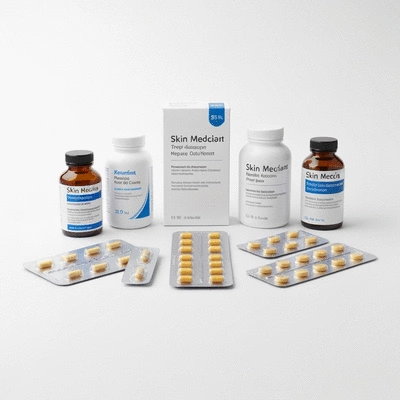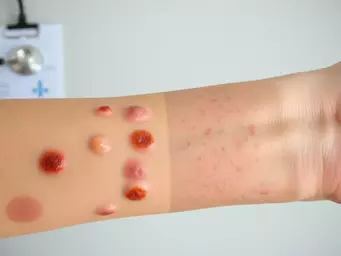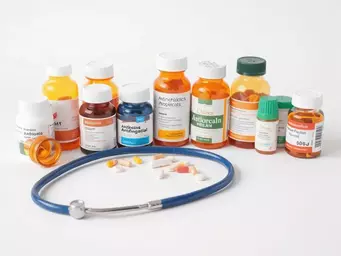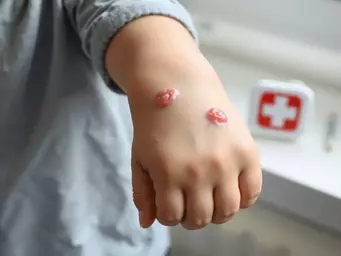Understanding Infectious Rash Treatments

Early recognition of infectious rashes can make all the difference in achieving optimal skin health. Understanding the types, causes, and appropriate responses is essential for effective management. Here’s a concise breakdown of what you’ll learn about dealing with these skin issues.
What You Will Learn
- Infectious rashes can be caused by bacteria, viruses, or fungi, each presenting distinct symptoms.
- Key features to assess include color, texture, size, and shape of the rash for accurate identification.
- Recognizing when to seek medical advice is critical; signs include spreading, severe pain, or fever.
- Proactive engagement with healthcare providers and utilizing telemedicine can enhance rash management.
Infectious Rashes: Causes and Treatment Categories
Understanding the different types of infectious rashes and the medications used to treat them can help in early recognition and effective management. Below is a summary of the causes and corresponding medication categories.
Common Causes of Infectious Rashes
- Bacterial (e.g., Impetigo, Cellulitis)
- Viral (e.g., Herpes Simplex, Varicella-Zoster)
- Fungal (e.g., Candida, Athlete's Foot)
Prescription Medication Categories
- Antibiotics (for Bacterial)
- Antivirals (for Viral)
- Antifungals (for Fungal)
- Corticosteroids (for Inflammation)
Guidelines for Seeking Medical Advice
- Rash spreading or worsening
- Severe itching or pain
- Signs of infection (pus, increased redness)
- Fever accompanying symptoms
Key Features for Assessing Skin Lesions
- Color (red, brown, purple)
- Texture (smooth, bumpy, scaly)
- Size and Shape (localized or widespread)
Understanding Infectious Rashes and Their Causes
When it comes to skin health, understanding infectious rashes is crucial. These rashes can occur due to various pathogens and can lead to discomfort or more serious health concerns if not addressed promptly. In this section, we’ll explore what infectious rashes are, their common causes, and how to assess skin lesions effectively. Let’s dive in!
Defining Infectious Rashes: Types and Characteristics
Infectious rashes are skin irritations caused by infectious agents like bacteria, viruses, or fungi. These rashes can manifest in several ways, often presenting as redness, swelling, and sometimes blisters or pustules. Identifying the specific type of rash is essential for determining the appropriate treatment.
- Bacterial Rashes: Often characterized by distinct lesions, these can be painful or itchy. For guidance on treating bacterial skin infections, refer to the Infectious Diseases Society of America (IDSA) practice guidelines.
- Viral Rashes: Typically spread through infections like the flu or chickenpox, these rashes may accompany other symptoms like fever. For information on treatment for common viral infections, the CDC provides comprehensive guidelines.
- Fungal Rashes: Commonly arising from conditions like athlete's foot, they often appear flaky or scaly.
Understanding these characteristics helps in identifying the condition better, and it empowers individuals to seek timely medical advice. As someone passionate about skin health, I find that early recognition can significantly aid in recovery.

Common Causes Behind Infectious Rashes: Bacterial, Viral, and Fungal
Identifying the cause of an infectious rash is vital for treatment success. Here are some common culprits:
- Bacterial Causes: Conditions like impetigo and cellulitis are common bacterial infections that lead to rashes. Group A strep bacteria, for example, can cause several skin infections, including impetigo.
- Viral Causes: Viruses such as herpes simplex or varicella-zoster (chickenpox) can cause significant skin reactions.
- Fungal Causes: Fungi such as Candida can lead to infections resulting in rashes, particularly in warm, moist areas.
Recognizing these causes not only helps in managing the rash but also in preventing future outbreaks. It’s essential to know where to look for potential exposure and understand how these infections spread.
Assessing Skin Lesions: Identifying Key Features of Rashes
When you notice a rash, assessing its characteristics is the first step toward effective management. Here are key features to observe:
- Color: Rashes can vary in color from red to brown or even purple.
- Texture: Some rashes may feel smooth while others could be bumpy or scaly.
- Size and Shape: Observing whether the rash is localized or widespread is important.
By paying attention to these features, you can gather valuable information that will be helpful when speaking with a healthcare provider. Remember, keeping a record of any changes can aid in diagnosis and treatment!
Did You Know?
According to the American Academy of Dermatology, skin rashes are among the top reasons patients visit dermatologists, accounting for approximately 30% of all visits. Early recognition and treatment can significantly improve outcomes and reduce discomfort!
Summarizing Key Insights on Prescription Medications for Infectious Rashes
Understanding the landscape of prescription medications for infectious rashes is crucial for effective management. Let’s recap the primary medication categories we’ve discussed: antibiotics, antivirals, antifungals, and corticosteroids. Each plays a unique role in treating various skin conditions, helping to alleviate symptoms and address the underlying infections.
Antibiotics target bacterial infections, while antivirals are essential for managing viral rashes. Antifungals address fungal skin conditions, and corticosteroids provide relief for inflammatory responses. Recognizing which category applies to your specific rash is the first step toward effective treatment!
Recap of Medication Categories and Their Roles
- Antibiotics: Used for bacterial rashes, they help eliminate infection and reduce inflammation.
- Antivirals: Key in treating viral rashes, they inhibit virus replication.
- Antifungals: Combat fungal infections effectively, reducing itching and irritation.
- Corticosteroids: Manage inflammatory symptoms, offering relief from redness and swelling.
Each of these medications has its purpose, and understanding them can empower you to make informed decisions about your skin health. Always consult with a healthcare provider to determine which treatment is best for your specific condition!

Importance of Early Recognition and Proper Management of Rashes
Early recognition of skin rashes can significantly improve treatment outcomes. When you notice changes in your skin, such as unusual redness, swelling, or itching, it’s essential to pay attention. Prompt action can mean the difference between a simple treatment and a more complex intervention. I often emphasize the importance of tracking your symptoms, as this can help healthcare providers make accurate diagnoses.
Additionally, proper management of infectious rashes not only addresses the immediate symptoms but also prevents complications. Collaborating with your healthcare provider ensures you receive tailored guidance, promoting faster healing and improving your overall skin health!
Taking Action: When to Seek Medical Advice for Skin Reactions
Guidelines for Patients: Understanding Your Symptoms
Recognizing when to seek medical advice is crucial in managing skin reactions effectively. Here are some guidelines to help you:
- If your rash is spreading or worsening.
- If you experience severe itching or pain.
- If you notice signs of infection, such as pus or increased redness.
- If you have a fever accompanying your skin symptoms.
Taking these signs seriously can lead to quicker treatment and better results. Remember, your skin is a reflection of your overall health, so don’t hesitate to reach out if something feels off!
Encouraging Proactive Healthcare Engagement for Rash Management
Proactive engagement with healthcare providers is essential in managing skin rashes effectively. Don’t wait for symptoms to escalate—be proactive! Regular check-ups and discussions about your skin health can lead to timely interventions.
Additionally, keeping an open line of communication with your healthcare provider can help you feel more empowered in your treatment journey. They can provide valuable insights tailored to your unique situation, ensuring you stay informed and engaged.
Utilizing Telemedicine for Early Consultation on Skin Conditions
In today’s digital age, telemedicine has become a fantastic resource for skin health consultations. You can easily connect with dermatologists through video calls or online platforms, allowing for quick assessments without leaving home. This is especially beneficial for individuals who may not have easy access to specialists.
Utilizing telemedicine for early consultations can help you get timely advice and potentially avoid complications. If you're unsure about a rash, I encourage you to reach out via telehealth services—it's a proactive step towards achieving healthier skin!
Frequently Asked Questions (FAQs) About Infectious Rashes
- Q: What are the main causes of infectious rashes?
- A: Infectious rashes can be caused by bacteria (e.g., impetigo, cellulitis), viruses (e.g., herpes simplex, chickenpox), or fungi (e.g., athlete's foot, Candida).
- Q: How can I tell if a rash is serious enough to see a doctor?
- A: You should seek medical advice if your rash is spreading or worsening, causes severe itching or pain, shows signs of infection (like pus or increased redness), or is accompanied by a fever.
- Q: What types of medications are used to treat infectious rashes?
- A: Treatment depends on the cause: antibiotics for bacterial rashes, antivirals for viral rashes, antifungals for fungal rashes, and corticosteroids to manage inflammation and symptoms.
- Q: What key features should I look for when assessing a skin rash?
- A: Pay attention to the rash's color (red, brown, purple), texture (smooth, bumpy, scaly), and its size and shape (localized or widespread).
- Q: Can telemedicine be used for diagnosing and treating infectious rashes?
- A: Yes, telemedicine is a convenient option for early consultations, allowing you to connect with dermatologists or healthcare providers remotely for assessment and advice, especially if you have limited access to specialists.
Recap of Key Points
Here is a quick recap of the important points discussed in the article:
- Types of Infectious Rashes: Understand that rashes can be bacterial, viral, or fungal, each with distinct characteristics.
- Common Causes: Recognize conditions like impetigo for bacterial, herpes simplex for viral, and Candida for fungal infections.
- Assessing Skin Lesions: Pay attention to key features such as color, texture, size, and shape to provide accurate information to healthcare providers.
- Prescription Medications: Familiarize yourself with medication categories: antibiotics, antivirals, antifungals, and corticosteroids, and their roles in treatment.
- Early Recognition: Act promptly on unusual skin changes to improve treatment outcomes and prevent complications.
- Seeking Medical Advice: Know when to consult a healthcare provider, especially if symptoms worsen or signs of infection appear.
- Utilizing Telemedicine: Take advantage of telehealth services for convenient and timely consultations regarding skin conditions.

















